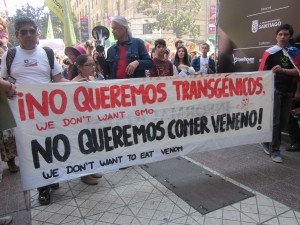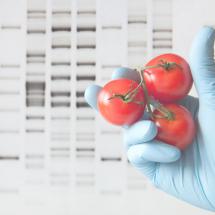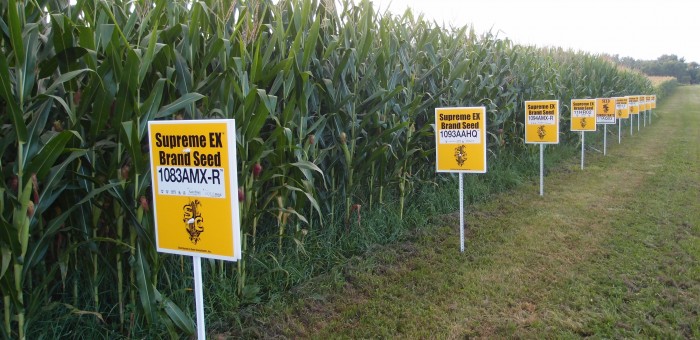Health
Constituency Report – April 2016
Constituency Report is a public service that Shaw TV graciously offers MLAs. This month’s video is provided below.
Judy Fainstein and I once more tried something different. The first segment follows the usual discussion of legislative issues relevant to Oak Bay-Gordon Head and British Columbia in general. In the second segment, I introduce Isobel Mackenzie, British Columbia’s Seniors Advocate. We discuss the role and services offered by the Office of the Seniors Advocate British Columbia.
As always, I’d be interested in your feedback on this constituency report.
Constituency Report
Labelling of GMOs: A backgrounder & what do you think?
Introduction
Genetically modified (GM) foods are widespread in Canada, with the potential for further expansion. Though the majority of studies show no negative health effects from consuming GM foods, there is controversy regarding the validity of these studies, and many significant concerns and unanswered questions regarding their effects on the environment.
Background
 Genetic Modification (GM) refers to the introduction of new traits to an organism in a way that does not occur naturally, by making changes to its genetic makeup through intervention at the molecular level.
Genetic Modification (GM) refers to the introduction of new traits to an organism in a way that does not occur naturally, by making changes to its genetic makeup through intervention at the molecular level.
The first GM crops were approved for sale in Canada in the mid 1990s, and they have since become pervasive: they are found in more than 70% of processed foods sold in North America. More than 90% of canola and sugar beets, 80% of corn and 60% of soy grown in Canada are genetically engineered.
While genetic modification can be undertaken for a variety of purposes, including nutrition improvement, virus resistance, and drought resistance, virtually all GM crops on the market today are engineered exclusively for herbicide tolerance or insect resistance.
 Herbicide tolerant crops have been engineered to withstand application of herbicides: most common is Monsanto’s “Roundup Ready” corn, which tolerates glyphosate. Crops engineered for insect resistance produce their own pesticides. The most common are Bt crops, such as Bt Cotton and Bt Corn, which are engineered to synthesize Bacillus thuringiensis (Bt) endotoxin in their cells, making them toxic to some insects. Many GM crops are “stacked” with both herbicide tolerance and insect resistance.
Herbicide tolerant crops have been engineered to withstand application of herbicides: most common is Monsanto’s “Roundup Ready” corn, which tolerates glyphosate. Crops engineered for insect resistance produce their own pesticides. The most common are Bt crops, such as Bt Cotton and Bt Corn, which are engineered to synthesize Bacillus thuringiensis (Bt) endotoxin in their cells, making them toxic to some insects. Many GM crops are “stacked” with both herbicide tolerance and insect resistance.
 There is a strong “right to know” movement advocating mandatory labelling of GM foods in the US and Canada. Polls show that 90% of Canadians support mandatory labeling, and 64 countries around the world have mandatory labelling. Going further, some countries have banned the cultivation of GMOs altogether. Some US states have passed mandatory labelling laws, but a bill is currently under consideration in the US Senate, which would mandate that any such labelling takes place only at the Federal level, and only if health and safety is shown to be at issue.
There is a strong “right to know” movement advocating mandatory labelling of GM foods in the US and Canada. Polls show that 90% of Canadians support mandatory labeling, and 64 countries around the world have mandatory labelling. Going further, some countries have banned the cultivation of GMOs altogether. Some US states have passed mandatory labelling laws, but a bill is currently under consideration in the US Senate, which would mandate that any such labelling takes place only at the Federal level, and only if health and safety is shown to be at issue.
Some of the Key Issues
GMO foods have been widely consumed for 20 years. The majority of scientific studies undertaken suggest no negative health effects from consuming GMOs (see here and here). However, there are a number of criticisms aimed at these studies, including their short-term nature and the fact that industry funds a large proportion of them.
 Some studies have shown negative health effects of GM foods, including toxicity, immune responses, hormonal effects, and allergenicity, but their results are also contentious within the scientific community. Many of the studies showing negative health effects focus on the effects of glyphosate, which the World Health Organization has listed as a probable human carcinogen, and Bacillus thuringiensis (Bt), which are present in GM crops but are also used in conventional, and, in the case of Bt, organic agriculture. It is debated whether the levels at which Bt is found in GM crops are higher or lower than in conventional or organic crops, and whether there are qualitative differences in Bt, with human health and environmental implications, depending on how it is used.
Some studies have shown negative health effects of GM foods, including toxicity, immune responses, hormonal effects, and allergenicity, but their results are also contentious within the scientific community. Many of the studies showing negative health effects focus on the effects of glyphosate, which the World Health Organization has listed as a probable human carcinogen, and Bacillus thuringiensis (Bt), which are present in GM crops but are also used in conventional, and, in the case of Bt, organic agriculture. It is debated whether the levels at which Bt is found in GM crops are higher or lower than in conventional or organic crops, and whether there are qualitative differences in Bt, with human health and environmental implications, depending on how it is used.
The environmental effects of GM crops are a second key issue. Herbicide resistant plants – so-called “super weeds” – are on the rise, resulting from the widespread use of herbicides, particularly glyphosate. Herbicide use has increased significantly since the advent of GM crops; one study estimates a 15-fold increase between 1996, when glyphosate-resistant crops were introduced, to 2014. Many draw a direct link between herbicide-resistant GM crops and the increase in herbicide use (see here and here, for example). In response to weed resistance to glyphosate, chemical companies are developing new herbicides and engineering crops to resist them, such as 2,4-D resistant corn and soybeans, grown with Dow’s Enlist Duo, which combines herbicides 2,4-D and Glyphosate.
 The other major GM crop, modified with Bt to resist insects, has led to a reduction in the use of chemical insecticides in the US (the Canadian government does not track the impact of Bt crops on insecticide use). However, it is debated whether the GM plants have more or less pesticides present than those used in conventional or organic agriculture. Furthermore, since Bt has been used so widely in GM crops, insects are becoming resistant to it, thus farmers may have to switch to other, more toxic pesticides (see here, here and here).
The other major GM crop, modified with Bt to resist insects, has led to a reduction in the use of chemical insecticides in the US (the Canadian government does not track the impact of Bt crops on insecticide use). However, it is debated whether the GM plants have more or less pesticides present than those used in conventional or organic agriculture. Furthermore, since Bt has been used so widely in GM crops, insects are becoming resistant to it, thus farmers may have to switch to other, more toxic pesticides (see here, here and here).
In terms of contamination, GM crops have the ability to contaminate organic farms, which prohibit the use of genetic modification, thereby making organic farming difficult or impossible in regions close to GM agriculture. There is a largely unknown risk of transgene transference from GM crops to wild gene pools: some instances of transference have been reported, but the extent and future potential is unknown.
A Canadian expert panel put together by the Royal Society of Canada noted that the uncertain environmental impacts of GM crops could justify mandatory labeling. Independent research is lacking, as research is primarily funded by industry. The Canadian government doesn’t undertake an independent review process of industry studies on the health and environmental safety of their products before approving them.
 Underlying discussions of the health and environmental effects of GM crops is a problem with treating GMOs categorically. Genetic modification is a process that can be used for different purposes and to a wide variety of effects. As noted, while herbicide resistant GM crops are associated with increased herbicide use, pesticide producing GM crops, such as Bt crops, have reduced the use of chemical insecticides. Genetic modification can potentially improve nutrition, such as “Golden Rice” with vitamin A added, or GM potatoes that release fewer carcinogenic acrylamides when cooked; it can make crops virus resistant, by inserting virus proteins into the DNA, as with the GM papaya; and it can help plants become drought resistant, potentially improving global food security. A key point of criticism of mandatory labelling is that it does not differentiate between the types of modification taking place, and their associated effects on human health or the environment.
Underlying discussions of the health and environmental effects of GM crops is a problem with treating GMOs categorically. Genetic modification is a process that can be used for different purposes and to a wide variety of effects. As noted, while herbicide resistant GM crops are associated with increased herbicide use, pesticide producing GM crops, such as Bt crops, have reduced the use of chemical insecticides. Genetic modification can potentially improve nutrition, such as “Golden Rice” with vitamin A added, or GM potatoes that release fewer carcinogenic acrylamides when cooked; it can make crops virus resistant, by inserting virus proteins into the DNA, as with the GM papaya; and it can help plants become drought resistant, potentially improving global food security. A key point of criticism of mandatory labelling is that it does not differentiate between the types of modification taking place, and their associated effects on human health or the environment.
 Mandatory labelling has a significant amount of public and political support, advertised as a means to give customers the ability to know what they are eating. The effect of mandatory labelling on consumer demand is debated: some argue that it will be widely perceived as a warning, thereby decreasing consumer demand for GM products. In response to consumer demand it is predicted that producers will shift away from GM products and source non-GM ingredients. The costs of labelling to the consumer in Canada are debated, but a large study in the US estimated that mandatory labelling would cost US$2.30 per person annually, not incorporating potential behaviour changes.
Mandatory labelling has a significant amount of public and political support, advertised as a means to give customers the ability to know what they are eating. The effect of mandatory labelling on consumer demand is debated: some argue that it will be widely perceived as a warning, thereby decreasing consumer demand for GM products. In response to consumer demand it is predicted that producers will shift away from GM products and source non-GM ingredients. The costs of labelling to the consumer in Canada are debated, but a large study in the US estimated that mandatory labelling would cost US$2.30 per person annually, not incorporating potential behaviour changes.
Another significant issue is the role of chemical companies and large corporations in agriculture. A small number of large corporations exercise ownership over a large and growing amount of food. Farmers cannot save and replant GM seeds; they must purchase them from the manufacturers. There are fears seed diversity will be negatively impacted, impacting food security.
Several Questions
 Whereas today GM foods are primarily present in processed foods and animal feed, there is potential for the commercialization of many other GM crops. Efforts are underway to commercialize the non-browning “Arctic Apple”, GM alfalfa, wheat, and some species of fish. What would the effects be of the expansion of the kinds of GM crops being grown, especially for our ability to grow organic produce?
Whereas today GM foods are primarily present in processed foods and animal feed, there is potential for the commercialization of many other GM crops. Efforts are underway to commercialize the non-browning “Arctic Apple”, GM alfalfa, wheat, and some species of fish. What would the effects be of the expansion of the kinds of GM crops being grown, especially for our ability to grow organic produce?
GM crops have only been on the market since the 1990s, so the long-term effects on health and the environment cannot yet be conclusively known. Given the concerns regarding industry funding of scientific studies and the lack of long-term independent studies, many questions remain regarding the chronic and long-term effects of GM crops on human and animal health, and the environment.
Evaluation and Summary
Given the number and the extent of the unknowns associated with GM crops, precaution would suggest, at a minimum, mandatory labelling, an independent, peer-reviewed process to ensure the safety of GM crops before they are approved by government regulators, and long-term, well-funded independent studies on the effects of GM crop on human health and the environment. Mandatory labelling of foods containing genetically modified ingredients would enable people to choose if they want to consume GM foods and support GM technology through their purchases. It would also have the likely effect of decreasing demand for products containing GM crops, moving producers away from sourcing GM crops.
Labelling that specifies the nature of genetic modification (e.g. genetically modified for insect resistance; herbicide tolerance; vitamin A added) would differentiate between kinds of genetic engineering and make the information conveyed through labels more meaningful for consumers. Investigating the extent to which specific labelling is possible, what its challenges and costs would be, and whether there are best practices elsewhere, is suggested.
Industry is a significant source of funding for scientific studies on the health and environmental effects of GM crops, and the Canadian government does not independently review company studies on the safety of GM crops. Funding independent and long-term research on health, environmental, and other effects of GMOs would provide a trusted scientific source of information to inform policy going forward. The establishment of a national research program to monitor the long-term effects of GM organisms was recommended by the Royal Society of Canada expert panel to the Canadian government in 2001, but has not yet been realized.
It seems that many of the strongest motives for concern regarding GMOs come less from an issue with the technology of genetic modification itself, and more from the context in which it is taking place. Regulation and independent long-term research are lacking, and a small number of large chemical companies are driving forward a huge expansion of GM technology in the midst of many uncertainties and unanswered questions regarding its potential effects on our health and the health of our environment.
Let us know what you think.
A Private Members Bill to Protect RDSPs and RESPs from Creditors
Today in the legislature I introduced a private members Bill M208 – Court Order Enforcement Amendment Act, 2016. The bill adds Registered Disability Savings Plans (RDSPs) and Registered Education Savings Plans (RESPs) to the list of plans protected under the act.
If a person files for bankruptcy in B.C., their RRSPs are protected from being seized by creditors. However, the same protection does not exist for RESPs or for RDSPs. A child should not have their education investment seized due to misfortune that befalls their parents. Alberta has protected RESPs; we should follow suit.
I asked the Minister of Justice about this problem in question period two years ago. At the time, the Minister said that it was an important issue and that she’d be glad to work with me to move it forward. Yet two years have now passed and still nothing has changed. Seeing as I haven’t seen any meaningful progress from the government on this simple legislative change, I decided to offer them a possible solution.
Text of Bill Introduction
A. Weaver: I move a bill, intituled Court Order Enforcement Amendment Act, 2016, of which notice has been given in my name on the order paper, be introduced and read a first time now.
Motion approved.
A.Weaver: Registered Retirement Savings Plans (known as RRSPs) were first introduced federally in 1957. Legislation enabling Registered Retirement Income Funds (known as RRIFs) was subsequently brought forward in the late 1970’s.
RRSPs and RRIFs are protected in this, and most other provinces, from creditors in the case of personal bankruptcy. Protecting these funds provides a glimmer of hope that individuals undergoing bankruptcy will not be destitute in their old age.
In 2008 Federal legislation was passed to allow for the creation of Registered Disability Savings Plans (RDSPs). The RDSP is a federal, tax-deferred, long-term savings plan for people with disabilities who want to save for the future.
Unfortunately, under our outdated Court Order Enforcement Act, 1996, RDSPs are not listed as a registered plan in BC’s legislation and are therefore not exempt from creditor protection. Should an individual with an RDSP go into debt, their savings in the RDSP will not be protected from seizure. The same is true for Registered Education Savings Plans (known as RESPs).
Recognizing that a child should not have their education investment seized due to a misfortune that befalls their parents, the Alberta government also passed legislation two years ago protecting from creditors.
This Bill amends the Court Order Enforcement Amendment Act to ensure that RESPs and RDSPs are protected by law from creditors.
I move that the bill be placed on the orders of the day for second reading at the next sitting of the House after today.
Motion approved.
BILL M208, Court Order Enforcement Amendment Act, 2016, introduced, read a first time and ordered to be placed on orders of the day for second reading at the next sitting of the House after today.
Video of Bill Introduction
Bill M205: Post-Secondary Sexual Violence Policies Act
Today in the legislature I introduced Bill M205: Post-Secondary Sexual Violence Policies Act. This bill, based on similar legislation in Ontario, aims to address the pervasive occurrence of sexualized violence plaguing universities, colleges and other post-secondary institutions in British Columbia. It creates a legal responsibility for them to develop and maintain policies that would work to prevent the occurrences of sexual violence and provide support for victims. The act would allow university- and college-specific policies to be developed that would meet the needs of students, including education and protection, while working to create a safe environment for all students to come forward to report a sexual assault.
The preponderance of sexualized violence on the campuses of post-secondary institutions affects all of us. It’s time for our government to stand up and say that enough is enough. With your support and collective voice we will be able to improve the safety of post-secondary experiences for everyone.
Below is the text and video of my introduction of the bill. If needed, the contact information for sexual assault support and crisis centers throughout British Columbia are also listed below.
Text of Bill Introduction
BILL M205 — POST-SECONDARY SEXUAL
VIOLENCE POLICIES ACT, 2016
A. Weaver: I move introduction of a bill intituled Post-Secondary Sexual Violence Policies Act, 2016.
Motion approved.
A. Weaver: It is estimated that one in four female university students will be sexually assaulted during the relatively short amount of time they spend on campus.
If that number seems startling, then keep in mind that when the University of Ottawa recently did a student survey on the issue, 44 percent of female students experienced some form of sexual violence or unwanted sexual touching. Within our province, we’ve heard of numerous assaults that have taken place over the last few weeks, with a variety of different responses.
It is with this in mind that I introduce the Post-Secondary Sexual Violence Policies Act. This bill requires colleges and universities to have sexual violence policies that set out the process that will apply when incidents and complaints of sexual violence are reported. It is critical that we establish a legal requirement for our post-secondary institutions to have sexual violence policies that educate, protect and support our students. This legislation would actively involve students in the development of these policies and ensure that universities are adequately reporting and responding to incidences of sexual assault.
I move that this bill be placed on the orders of the day for second reading at the next sitting of the House after today.
Bill M205, Post-Secondary Sexual Violence Policies Act, 2016, introduced, read a first time and ordered to be placed on orders of the day for second reading at the next sitting of the House after today.
Video of my introduction of the bill in the legislature today.
Video of Bill Introduction
Online and Phone-in Resources
- VictimLinkBC is a toll-free, confidential, multilingual multilingual telephone service available across B.C. and the Yukon 24 hours a day, 7 days a week. It provides information and referral services to all victims of crime and immediate crisis support to victims of family and sexual violence, including victims of human trafficking exploited for labour or sexual services, 1-800-563-0808
- 24 hour sexual assault crisis and information line, based in Victoria, 250–383-3232
- Qmunity Resource Centre provides counselling, resources, programs and peer support to the lesbian, gay, transgender, bisexual communities. (604) 684-5307.
- Youth In BC, provides an online chat program to connect victims with support. Available noon to 1am in BC and the Yukon.
City Specific Support and Crisis Centers
Victoria Sexual Assault Centre
3060 Cedar Hill Road #201
(250) 383-3232
http://vsac.ca/
Kamloops Sexual Assault Counselling Center
235 First Avenue #601
(250) 372-0179
http://www.ksacc.ca/
Women Against Violence Against Women
Vancouver, BC V6J 5C2
(604) 255-6344
http://www.wavaw.ca/
B C Society for Male Survivors of Sexual Abuse
3126 W Broadway
(604) 682-6482
http://bc-malesurvivors.com/
Prince George Sexual Assault Centre
5130N Nechako Rd.
(250) 564-8302
https://clbc.cioc.ca/record/CLB0654
SOS Society
Prince George, 193 Quebec St
(250) 564-8302
http://www.sossociety.net/
MLA Town Hall: Seniors and Health Care
On Tuesday, March 29th 2016 we will be hosting an MLA Town Hall on Seniors and Health Care, with special guest B.C. Seniors Advocate Isobel Mackenzie.
The event will take place from 7:00pm to 9:00pm at Oak Bay Recreation Centre, in the Sports View Lounge. Doors will open at 6:30pm and seating will be on a first-come, first-serve basis.
The evening will include a brief update on Andrew’s work as an MLA, both in the Legislature and around the constituency, followed by a presentation by the Seniors Advocate. After the presentation, there will be an open Q&A period moderated by Cairine Green, during which time questions can be addressed to either Andrew or Ms. Mackenzie.
We hope you will all join us for what is sure to be an informative discussion on issues surrounding seniors health care in our community.
For more information, please don’t hesitate to contact our office by email: andrew.weaver.mla@leg.bc.ca or by phone: 250.472.8528.








